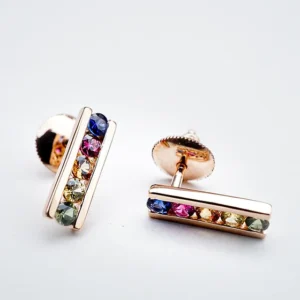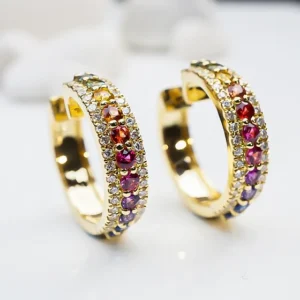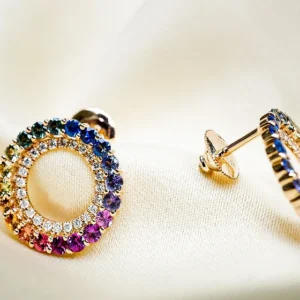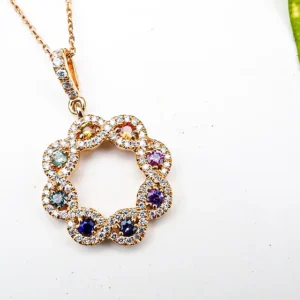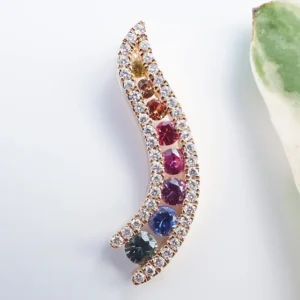Emerald Cut Diamonds: A Timeless Elegance that Captivates Hearts
Diamonds have long been revered as symbols of love, eternity, and unmatched beauty. Among the various diamond cuts available, the emerald cut stands out for its distinctive elegance and sophistication.
Table of Contents
In this article, we will delve into the world of emerald cut diamonds, exploring their unique characteristics, history, popular settings, and how to choose the perfect one for your special moments.
Introduction
Emerald cut diamonds epitomize the elegance of simplicity, blending step-cut facets and a rectangular shape to create a distinctive charm that marries timeless sophistication with contemporary allure.
This unique combination of understated grace and exceptional brilliance sets emerald cut diamonds apart, capturing hearts as light dances through their meticulously crafted facets. We explore these distinct qualities, delving into the enduring allure that makes emerald cut diamonds a treasure in the world of jewelry.
Emerald Cut Diamonds
An emerald cut diamond, brilliantly reflecting light from its facets.
What Sets Emerald Cut Diamonds Apart
Unlike traditional brilliant-cut diamonds, emerald cut diamonds exhibit a captivating play of light through their pavilion, adorned with precisely cut rectangular facets that create a mesmerizing hall-of-mirrors effect.
This unique optical phenomenon engenders a mirror-like appearance, evoking an aura of refined elegance that sets emerald cut diamonds apart as a sophisticated choice for those who seek understated grandeur in their jewelry.
A Glimpse into the History
Emerald cut diamonds boast a rich history dating back to the 16th century. Originally designed for emeralds, this cut’s exceptional ability to showcase a gem’s clarity and color led to its adaptation for diamonds.
From royal tiaras to iconic necklaces, emerald cut diamonds have adorned the jewelry boxes of royals and celebrities throughout history, cementing their status as timeless treasures that embody elegance and enduring allure.
The 4 Cs of Emerald Cut Diamonds
Carat Weight
Carat weight significantly influences an emerald cut diamond’s size. However, due to its elongated shape and larger table, emerald cut diamonds often appear larger than diamonds of the same carat weight in other shapes. This unique optical effect makes them a popular choice for those seeking impressive visual impact without solely relying on carat size.
Clarity Matters
Emerald cut diamonds’ step-cut facets accentuate their clarity, making inclusions more visible and higher clarity grades desirable. However, skillful placement of inclusions can add a unique personality to the diamond, turning imperfections into distinctive features that contribute to its individual charm.
Color Palette
Emerald cut diamonds uniquely reveal a stone’s color, making color grade selection vital. The cut’s elongated facets bring out the hue distinctly, emphasizing the importance of choosing a grade that suits both your preferences and the chosen setting, ensuring a harmonious and captivating final appearance.
Cut Precision
Cut quality is paramount for all diamonds, particularly for emerald cuts. The alignment of step facets significantly impacts light interplay, contributing to the diamond’s distinct brilliance. Each facet’s precision influences light entry, reflection, and dispersion, creating a captivating dance of brightness and fire that defines the stone’s unique allure.
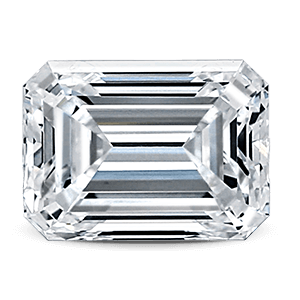
Emerald Cut Diamond
Advantages of the Emerald Cut
The emerald cut boasts an array of compelling advantages that contribute to its enduring popularity in the realm of diamond selection. Notably, its elongated shape and larger table offer a graceful and elongating effect on the finger when set in jewelry, making it a favored choice for engagement rings.
Moreover, the step-cut facets that define the emerald cut create a soothing and subdued sparkle that exudes an air of understated elegance, catering to those who appreciate refined glamour over overt opulence.
This cut’s distinctiveness extends beyond aesthetics; its clean lines and geometry seamlessly integrate into both vintage-inspired and contemporary jewelry designs, allowing for versatile customization that aligns with individual tastes and styles. The emerald cut also embodies a timeless charm, evoking a sense of nostalgia while remaining relevant in modern jewelry trends.
These advantages collectively make the emerald cut a true icon in the world of diamonds, celebrated for its ability to encapsulate grace, versatility, and enduring appeal.
Selecting the Perfect Setting
The setting you choose can enhance the beauty of your emerald cut diamond ring. Popular choices include solitaire, halo, and three-stone settings, each offering a distinct look that can cater to various styles.
Solitaire Setting
The solitaire setting, tailored for emerald cut diamonds, epitomizes an exquisite blend of simplicity and sophistication. Crafted to enhance the unique attributes of the emerald cut, this setting ensures that the diamond takes center stage with an unmatched presence.
The clean lines and uncluttered design allow the elongated facets of the emerald cut to shine brilliantly, creating a mesmerizing interplay of light that accentuates the stone’s elegance. The solitaire setting for emerald cut diamonds is a masterclass in restraint, allowing the diamond’s individuality to shine through while emphasizing its refined silhouette and captivating allure.
With this setting, the emerald cut’s hall-of-mirrors effect and understated charm are amplified, resulting in a timeless and enchanting piece of jewelry that stands as a true testament to the art of showcasing a diamond’s innate brilliance.
Halo Setting
The halo setting, reimagined for emerald cut diamonds, harmoniously blends vintage charm with contemporary allure. Encircling the diamond with smaller stones, it adds brilliance and contrast to the emerald cut’s elegant facets.
This setting enhances both the diamond’s presence and opulence, capturing attention with a captivating visual contrast. The halo setting for emerald cut diamonds elegantly marries nostalgia and modern sophistication, creating a stunning piece that radiates timeless allure.
Three Stone Setting
The three stone setting, adapted for emerald cut diamonds, symbolizes enduring relationships. It gracefully places the center diamond between two side stones, creating a trio that represents past, present, and future.
The setting enhances the emerald cut’s brilliance and reflects the journey of two individuals, making it a meaningful choice for sentimental jewelry like engagement rings. The three stone setting for emerald cut diamonds embodies the essence of love’s journey and commitment.
Incorporating Emerald Cut Diamonds into Jewelry
Emerald Cut Engagement Rings
Emerald cut engagement rings, characterized by their stunning emerald cut diamond centerpiece, epitomize a harmonious blend of timeless elegance and contemporary sophistication.
These rings offer a captivating range of styles, from the classic allure of emerald cut solitaire rings that place the spotlight firmly on the exquisite center stone, to the enchanting opulence of emerald cut halo engagement rings that frame the diamond with an array of smaller, sparkling companions.
The allure of emerald cut engagement rings lies not only in their graceful step-cut facets that create a mesmerizing hall-of-mirrors effect, but also in their ability to effortlessly embrace diverse settings and metal choices, such as the radiant warmth of emerald cut engagement rings in gold.
The elongated silhouette of the emerald cut diamond enhances the finger’s appearance while its remarkable clarity and brilliance further emphasize the need for higher clarity grades to ensure the stone’s inner fire shines brilliantly.
From the understated charm of a solitaire to the intricate beauty of a halo, emerald cut engagement rings encapsulate the promise of a lifetime together, making them a symbol of enduring love and a reflection of the couple’s unique style.
Necklaces and Pendants
Necklaces and pendants adorned with emerald cut diamonds offer a captivating embodiment of refined luxury and personal expression. These exquisite pieces showcase the emerald cut’s elongated facets and distinctive geometry, creating a play of light that is nothing short of mesmerizing.
Whether gracing a delicate chain as a solitaire pendant or taking center stage in an elaborate necklace, emerald cut diamonds exude a timeless elegance that complements a range of styles and occasions.
The versatility of these diamonds extends to their settings, with options ranging from minimalist bezels that emphasize the stone’s intrinsic beauty to intricate designs that enhance its allure. The elongated silhouette of the emerald cut lends itself perfectly to necklace designs, effortlessly draping the diamond along the neckline in a graceful and captivating manner.
With its ability to radiate sophistication and individuality, an emerald cut diamond necklace or pendant becomes not only a stunning accessory but also a treasured piece of art that tells a story of elegance and enduring beauty.
Earrings
Earrings adorned with emerald cut diamonds epitomize a fusion of sophistication and allure. The unique elongated facets of the emerald cut diamonds create an enchanting play of light, whether in classic stud earrings or in more elaborate drop designs.
This versatility extends to various earring styles, from understated solitaire studs that exude timeless charm to intricate chandelier earrings that command attention.
The elongated shape of the emerald cut seamlessly complements the earlobe, adding a touch of refinement to any ensemble. Whether paired with an elegant evening gown or lending a touch of glamour to everyday wear, emerald cut diamond earrings effortlessly elevate the wearer’s style.
Their innate ability to evoke both understated elegance and captivating brilliance positions them as a sought-after choice for those who appreciate jewelry that transcends fleeting trends, celebrating enduring beauty and timeless allure in every facet.

An Emerald Cut Diamond Solitaire Ring
Celebrities and Emerald Cut Diamonds
Emerald cut diamonds, from Grace Kelly’s iconic engagement ring to Beyoncé’s statement jewelry, have adorned the fingers and necks of countless celebrities. Their choice reflects timeless allure and elegance, embodying enduring beauty beyond fleeting trends.
Caring for Your Emerald Cut Diamond
Proper care sustains your emerald cut diamond’s brilliance. Due to its elongated corners, protect it from sharp impacts. Regular cleaning and maintenance preserve its radiance, ensuring lasting beauty and value.
Investing in Elegance: Emerald Cuts in the Market
Emerald cut diamonds have gained substantial value due to rising popularity. Their enduring appeal and rarity make them prized by both jewelry enthusiasts and investors. The timeless elegance and captivating hall-of-mirrors effect contribute to their appreciation, creating a blend of emotional significance and sound financial investment.
How to Spot a High-Quality Emerald Cut Diamond
Assessing an emerald cut diamond’s quality involves analyzing its cut, clarity, color, and carat weight. These factors work together to create a stunning gem, with cut influencing light interaction, clarity indicating imperfections, color defining hue, and carat weight determining size.
A well-balanced combination of these attributes results in a diamond of exceptional allure, value, and significance.
Emerald Cut vs. Other Diamond Shapes: Pros and Cons
Comparing emerald cut diamonds to round brilliant and princess cut shapes reveals unique advantages and considerations that influence your choice. The emerald cut’s elongated form and hall-of-mirrors effect stand out, while the round brilliant dazzles with its facets and the princess cut offers modern elegance.
Practical factors like clarity emphasis and light dispersion further differentiate the choices. Each shape carries distinct charm and character, allowing you to select a piece that resonates with your style and emotions.
Unveiling the Myths
Size Over Everything?
In the realm of emerald cut diamonds, prioritize quality over size. While they may appear larger, a slightly smaller stone with excellent characteristics will outshine a compromised larger one. Superior cut, clarity, and craftsmanship bring out the unique allure of emerald cuts, ensuring lasting beauty and brilliance.
Limited Sparkle?
Contrary to a common misconception, emerald cut diamonds do exhibit brilliance. Crafted with precision, they showcase a unique sparkle that’s enchanting. Their step-cut facets create a captivating mirror-like appearance, exuding sophistication.
While not characterized by fiery bursts, the refined flashes from these facets offer an understated elegance and timeless charm, appealing to those who appreciate a subtler yet equally compelling brilliance.
Suitable for All Styles
Emerald cut diamonds challenge the misconception of being confined to vintage aesthetics. Their versatility spans from classic to modern designs. While their elongated form evokes nostalgia, these diamonds seamlessly complement both traditional and contemporary settings.
Their clean lines and symmetrical facets adapt effortlessly to a range of styles, making them a timeless choice that transcends eras and design preferences.
The Eternal Allure of Antique Emerald Cut Diamonds
Antique emerald cut diamonds hold a captivating allure, blending their history with the cut’s elegance to create enchanting jewelry that tells a rich story. Each gem carries a past that adds depth, making them not just beautiful adornments, but also links to heritage.
The fusion of vintage charm and timeless sophistication in these pieces connects wearers to generations past, evoking emotions as enduring as the diamonds themselves.
Customizing with Emerald Cut Diamonds
Customization empowers you to craft a jewelry piece that aligns with your unique style. Whether drawing from vintage or contemporary designs, emerald cut engagement rings in gold can be tailored to your vision. This adaptability ensures your ring reflects your individual preferences, making it a cherished symbol of your story and beauty.
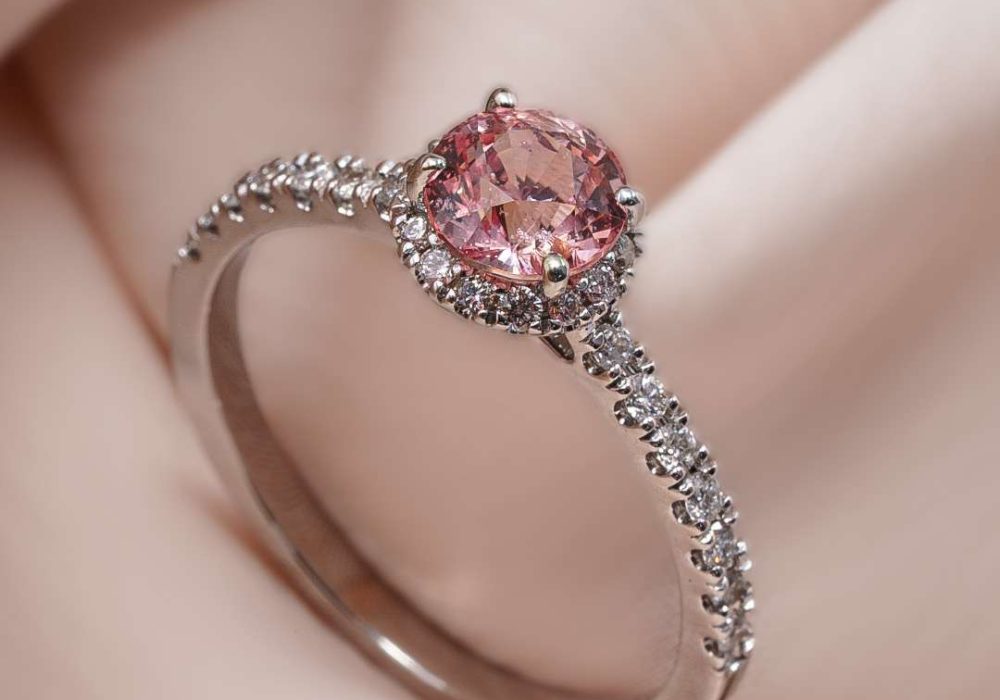
A Gemstone Ring
Final Thoughts
In conclusion, the allure of emerald cut diamonds transcends time and trends, offering a timeless elegance that captivates the heart and captures the imagination. From their mesmerizing hall-of-mirrors effect to their understated yet impactful brilliance, emerald cut diamonds stand as a testament to the harmonious interplay between art and nature.
Their elongated silhouette and step-cut facets have not only carved a niche for themselves in the world of jewelry but have also become a canvas for individual stories and expressions.
Whether set in solitaire engagement rings that celebrate enduring love, adorning necklaces that grace the neckline with sophistication, or sparkling in earrings that frame the face with elegance, emerald cut diamonds continue to enchant and inspire.
Their journey from the hands of skilled craftsmen to the cherished moments they become a part of is a celebration of beauty, tradition, and personal significance. As you embark on your journey to find the perfect emerald cut diamond, may your choice not only reflect the radiance of the gem but also the uniqueness of your own story and style.
FAQs About Emerald Cut Diamonds
An emerald cut diamond is a rectangular or square-shaped diamond with step-cut facets that create a hall-of-mirrors effect, showcasing its unique play of light and dark planes.
Emerald cut diamonds possess a different kind of brilliance characterized by graceful flashes of light rather than fiery sparkle, making them equally captivating.
Absolutely! Emerald cut diamonds can be incorporated into various designs, from vintage to contemporary, making them versatile and suitable for modern preferences.
To maintain its brilliance, protect your emerald cut diamond from sharp impacts and opt for regular cleaning and professional maintenance.
The value of emerald cut diamonds has risen due to their increasing popularity, rarity, and enduring appeal, making them a valuable choice for both enthusiasts and investors.
Certainly! Emerald cut engagement rings offer a range of customization options, allowing you to create a piece that reflects your unique style and vision.
Absolutely, emerald cut diamonds are versatile and can be incorporated into necklaces and earrings, adding a touch of sophistication and elegance to these pieces.
Yes, due to their step-cut facets, emerald cut diamonds tend to highlight clarity, making higher clarity grades desirable for these stones.
When compared to shapes like round brilliant and princess cut, emerald cut diamonds offer a distinct elegance and sophistication, each with its own unique charm.
Antique emerald cut diamonds carry a mysterious charm, blending history with elegance to create jewelry that holds a story and adds depth to its allure.

